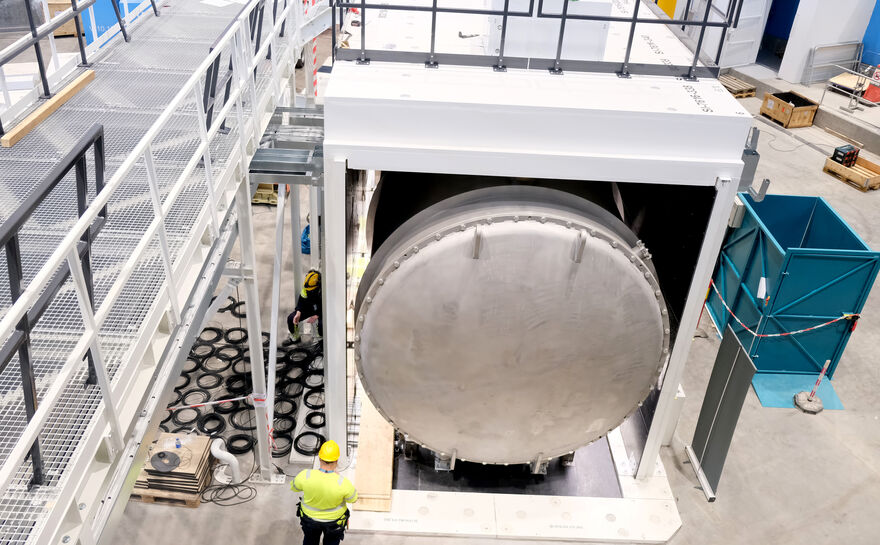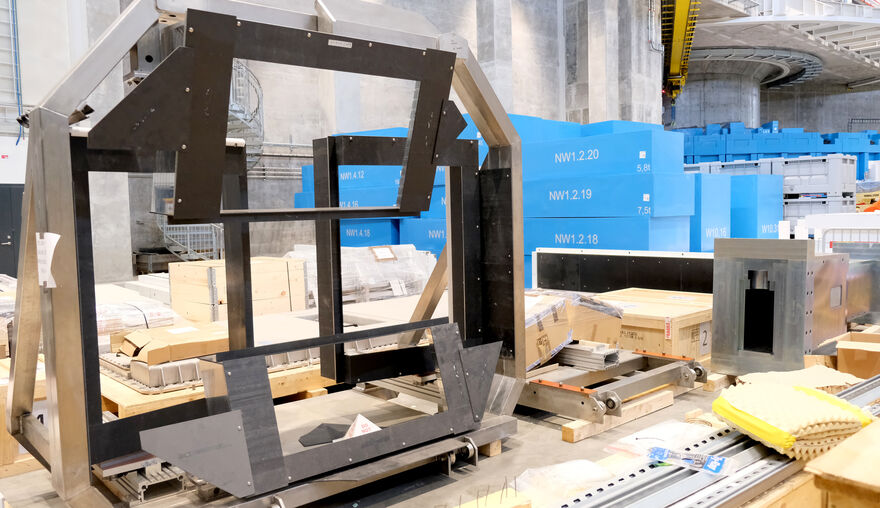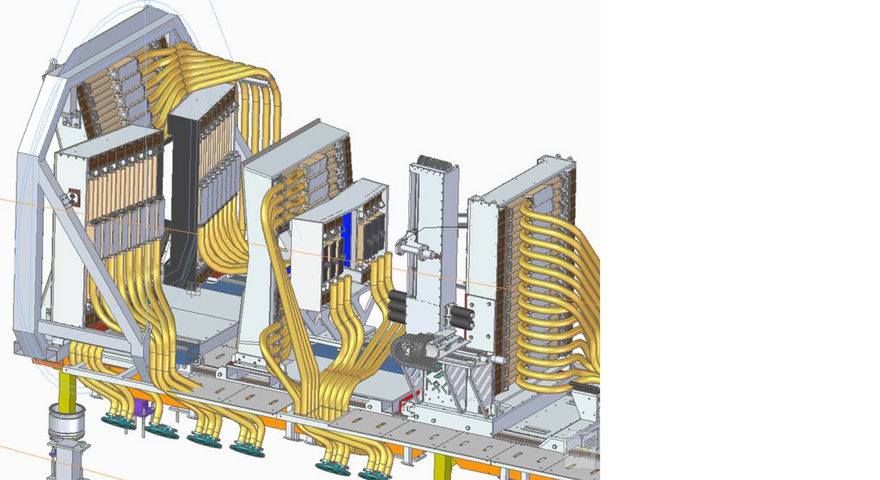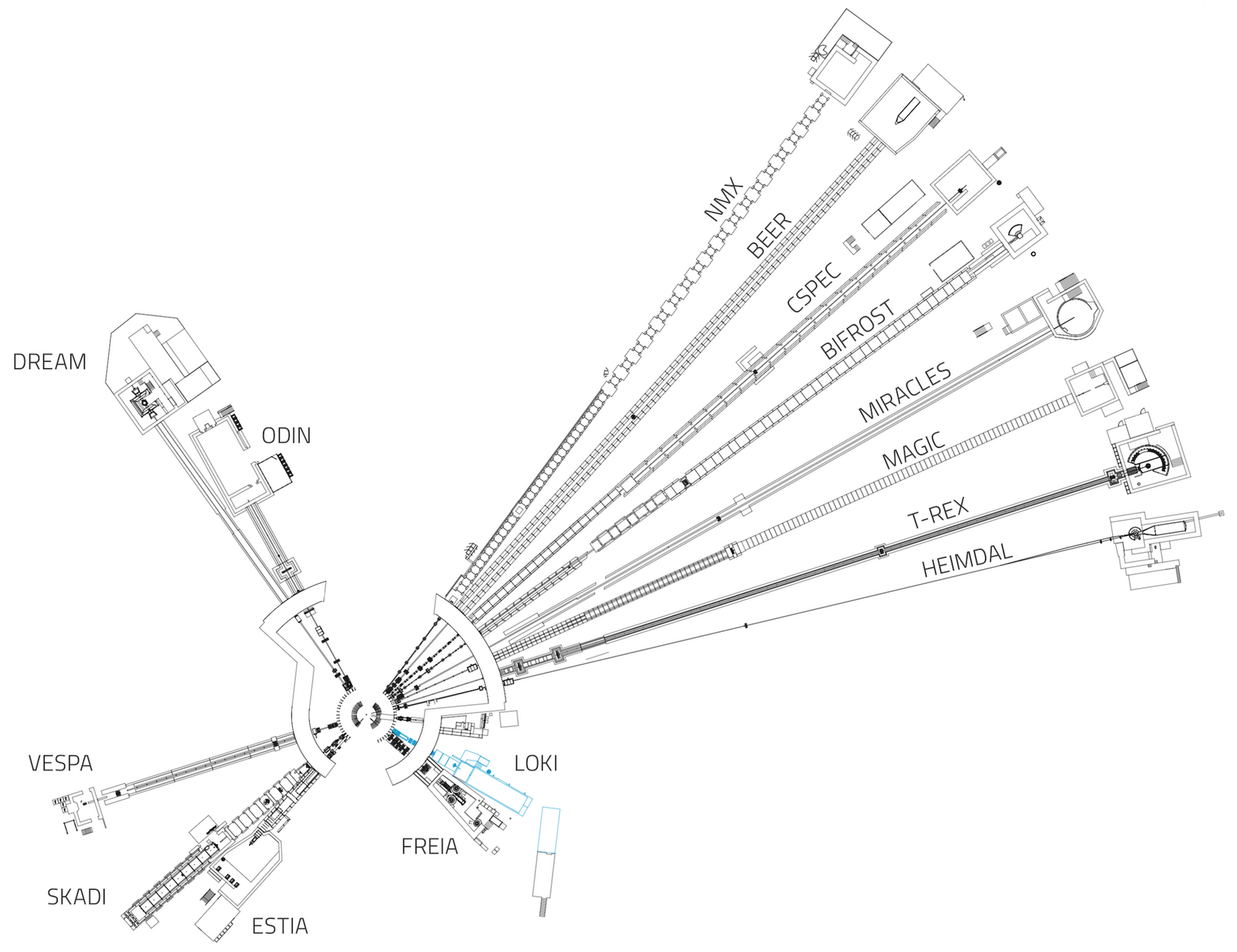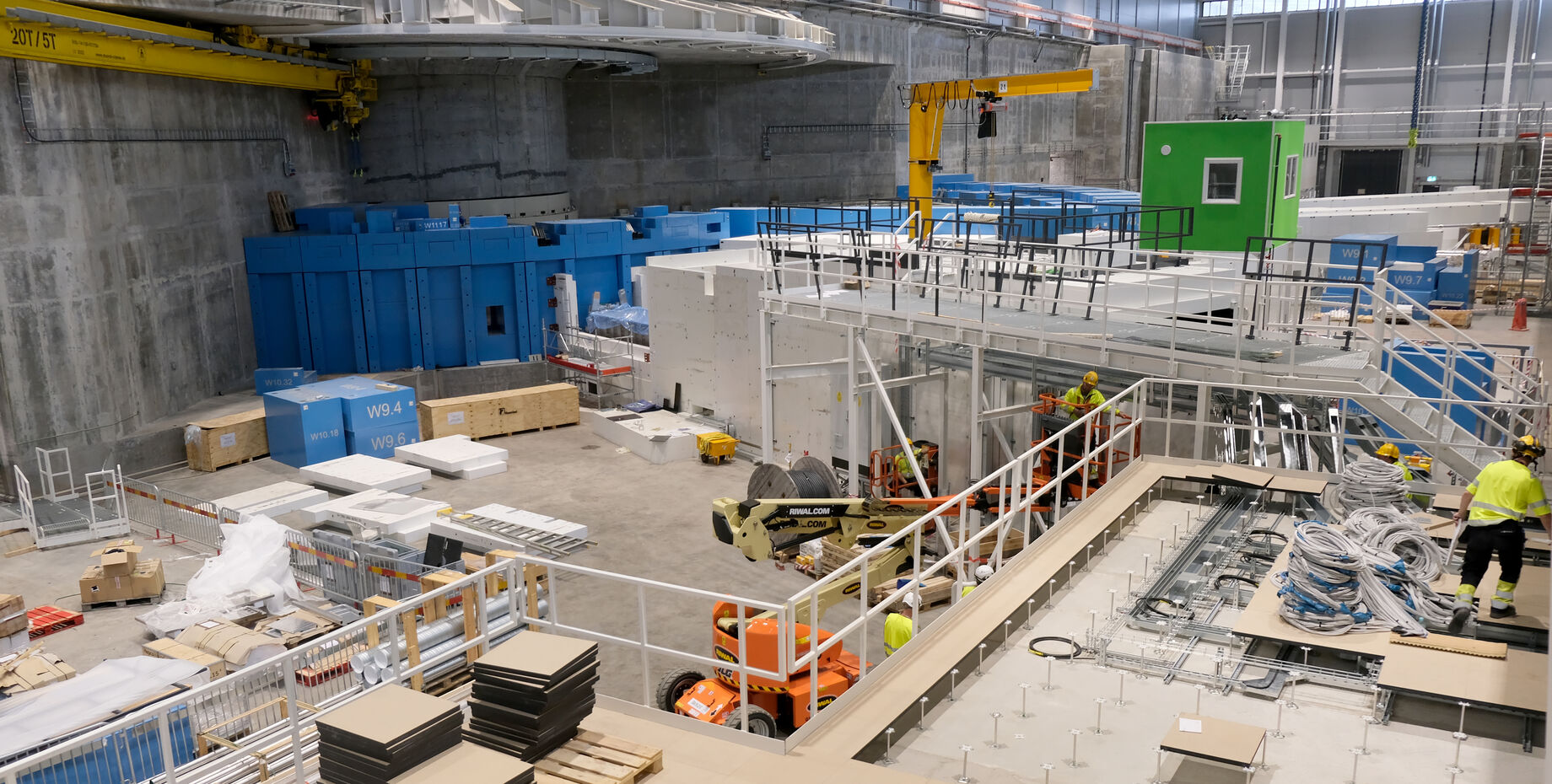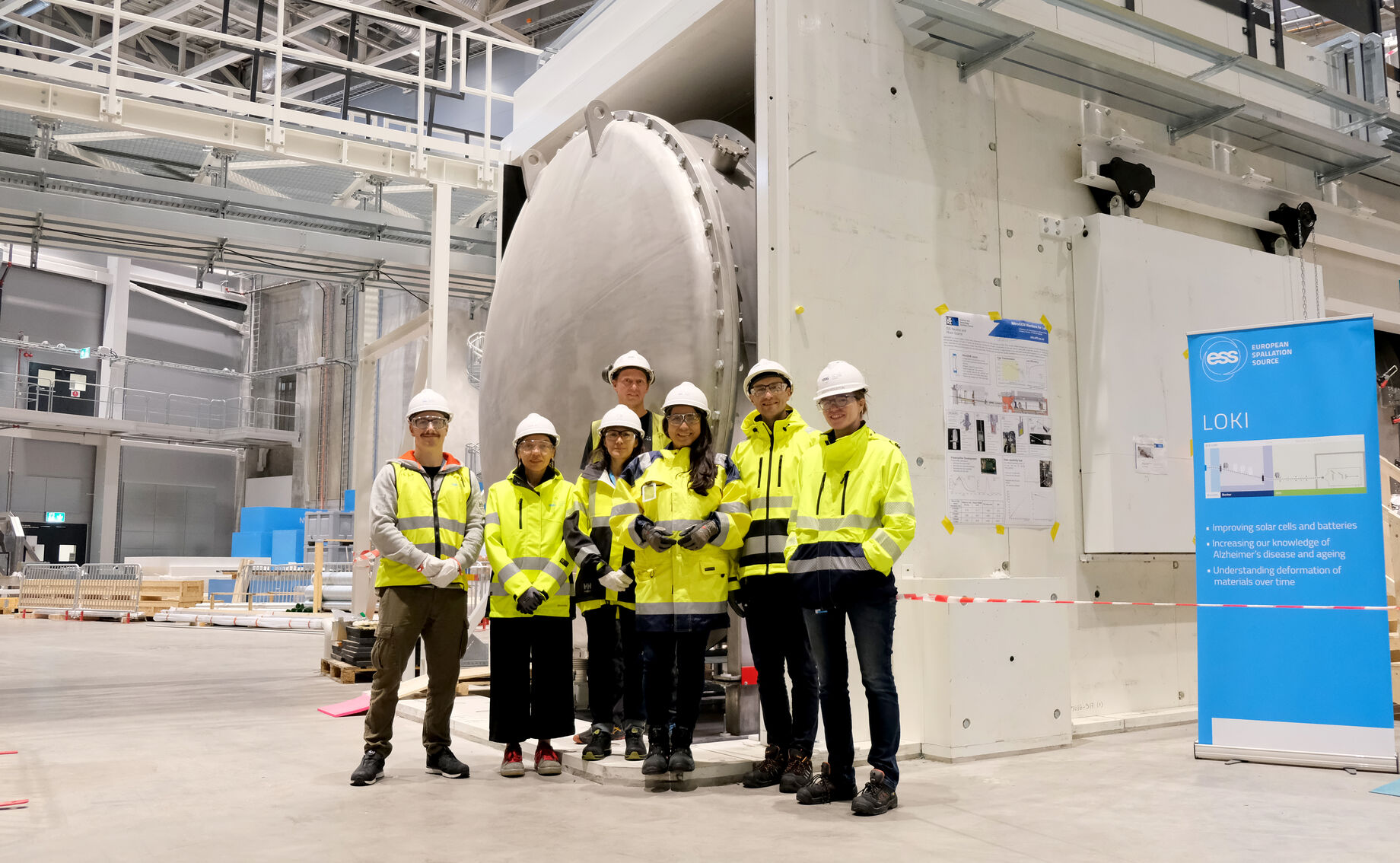
One of the first neutron detection system installations at ESS will be for the LOKI instrument. Delivery of key components from UK in-kind partner Science and Technology Facilities Council (STFC) has taken place. The ESS teams involved are getting ready for installation on site.
As of this week, all components of the LOKI detector system are at the ESS site, getting ready for installation. Several detectors are in preparation for testing and installation, with DREAM and BIFROST following a similar timeline to LOKI.
LOKI, a broadband SANS (Small Angle Neutron Scattering) instrument to provide insights into soft materials, will be one of the first 15 planned instruments at ESS to be equipped with a neutron detection system.
Neutron detectors are devices made of certain materials (so-called neutron converters) that can interact with neutrons. When neutrons interact with the material, the converter reacts by emitting charged particles.These charged particles travel through the detector volume, which is filled with special gases. As these particles move through the detector, secondary particles (electrons) are generated via the ionisation process.Inside the detector, there is also a set of electrodes that will collect the tiny electric signals generated by the ionisation electrons, process them, and deliver the information about the position and time of the neutron's interaction with the detector.
The LOKI detectors use a boron-coated straw technology developed by a commercial company in the US. The design of the detector modules, including the signal readout technology and software, was created by STFC.
Earlier this year, ESS in-kind partner STFC delivered the electronics, patch panels, and power cables needed for the ESS common electrical project to start the installation work. Now, a second delivery of the mechanical structures (frames, walking platforms, and rails), detector modules, hoses, and cables that connect detectors to the patch panels has been made to ESS, paving the way for the installation of one of the first detector systems at ESS.
Once the ESS facility is operational, the detectors will play a crucial role in collecting data from the interactions of neutrons with sample materials across different instruments. This raw data will be refined into analysable i
nsights by the ESS Data Management & Software Centre (DMSC) for the scientific community.
Before the installation can start, the detector modules will be tested at a neutron test facility set up at Lund University, following on from previous tests performed at STFC and will be conducted by the ESS Detector Group in collaboration with the LOKI team.
The installation on site will be performed in four phases:
-
Mechanical Installations: The initial installation involves positioning rails, walking paths, and structural elements inside the detector vessel to ensure precise alignment.
-
Main Frame and Detector Modules: The second phase focuses on loading primary frames and mounting detector modules.
-
Advanced Installation: In the third phase, the third frame, carriage, motion control system, and remaining devices will be installed.
-
Wiring and Integration: The final step involves wiring the detector modules to external patch panels, establishing necessary connections.
MEDIA


























